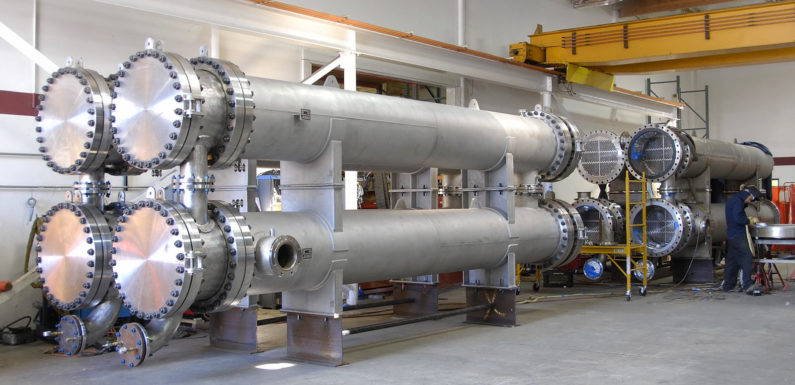
Heat exchanger refers to a device that is used to transfer heat between one or more fluids separated by a solid wall to prevent mixing or direct contact. Heat exchangers are available in different sizes and there are numerous types of heat exchangers available in the market suitable for their vivid use. Hybrid heat exchangers are also available in the market that are able to attain higher efficiency levels and are compact to fit in places with lack of space such as offshore platforms and ships.
Heat exchangers are used by various industries, such as HVAC, chemical, petrochemical and marine to dissipate or transfer the heat produced during different operations. A wide range of heat exchangers are available in the market according to the requirement of a particular industry. Shell & tube heat exchangers, plate heat exchangers, helical coil heat exchangers and fin type heat exchangers are some of the examples of heat exchangers used by different industries. The heat exchangers manufacturing companies have developed emergent technologies that have improved the efficiency of heat exchangers and can withstand the harmful effects of chemicals.
Heat exchanger products are generally classified by two broad categories, direction of flow of fluid and configuration. The direction of fluid flow includes parallel, cross and counter current. Configuration includes shell & tube, plate & frame, air cooled, and printed circuit flow.
The increasing industrialization and advancement in technology are some of the factors driving the growth of the global heat exchangers market during the forecast period. Chemical industry is anticipated to be the most attractive industrial segment, due to increasing investment in the industry across the globe, especially in Asia-Pacific. The shell & tube segment accounts for majority of the revenue generated in the global heat exchangers market, due to usage of these heat exchangers by a wide range of industries. Europe is anticipated to remain the largest market for heat exchangers during the forecast period. The introduction of new hybrid heat exchangers has revolutionized the global heat exchangers market with the availability of more efficient and compact heat exchangers.
The increasing cost of production of heat exchangers is anticipated to hamper the growth of the global heat exchangers market during the forecast period. Frame material and core that are made up of these materials significantly increases the cost of heat exchangers. Copper, stainless steel and aluminium are the most common metals used for the construction of heat exchangers. The cost of these metals has increased significantly during the recent years. Hence, a buyer has to trade between the price and performance of heat exchanger.
Some of the key companies operating in the global heat exchangers market include Kelvion Holding GmbH, Alfa Laval AB, SPX Corporation, Danfoss A/S, API Heat Transfer Inc., Xylem Inc., Hisaka Works Ltd., Guntner GmbH & Co. KG, Modine Manufacturing Company, HRS Hevac Ltd., SWEP International AB, Sondex Holdings A/S and Sierra S.p.a.

